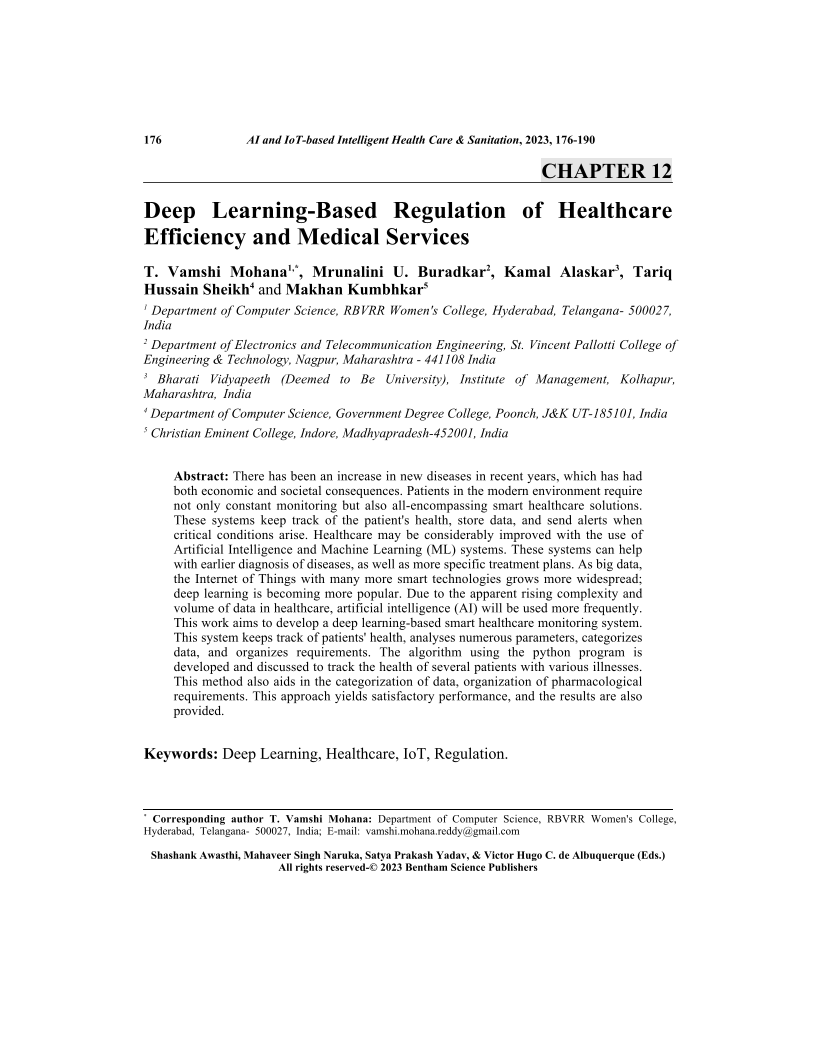Deep Learning-Based Regulation of Healthcare Efficiency and Medical Services

- Authors: T. Vamshi Mohana1, Mrunalini U. Buradkar2, Kamal Alaskar3, Tariq Hussain Sheikh4, Makhan Kumbhkar5
-
View Affiliations Hide Affiliations1 Department of Computer Science, RBVRR Women's College, Hyderabad, Telangana 500027, India 2 Department of Electronics and Telecommunication Engineering, St. Vincent Pallotti College of Engineering & Technology, Nagpur, Maharashtra - 441108 India 3 Bharati Vidyapeeth (Deemed to Be University), Institute of Management, Kolhapur, Maharashtra, India 4 Department of Computer Science, Government Degree College, Poonch, J&K UT-185101, India 5 Christian Eminent College, Indore, Madhyapradesh-452001, India
- Source: AI and IoT-based intelligent Health Care & Sanitation , pp 176-190
- Publication Date: April 2023
- Language: English
Deep Learning-Based Regulation of Healthcare Efficiency and Medical Services, Page 1 of 1
< Previous page | Next page > /docserver/preview/fulltext/9789815136531/chap12-1.gif
There has been an increase in new diseases in recent years, which has had both economic and societal consequences. Patients in the modern environment require not only constant monitoring but also all-encompassing smart healthcare solutions. These systems keep track of the patient's health, store data, and send alerts when critical conditions arise. Healthcare may be considerably improved with the use of Artificial Intelligence and Machine Learning (ML) systems. These systems can help with earlier diagnosis of diseases, as well as more specific treatment plans. As big data, the Internet of Things with many more smart technologies grows more widespread; deep learning is becoming more popular. Due to the apparent rising complexity and volume of data in healthcare, artificial intelligence (AI) will be used more frequently. This work aims to develop a deep learning-based smart healthcare monitoring system. This system keeps track of patients' health, analyses numerous parameters, categorizes data, and organizes requirements. The algorithm using the python program is developed and discussed to track the health of several patients with various illnesses. This method also aids in the categorization of data, organization of pharmacological requirements. This approach yields satisfactory performance, and the results are also provided.
-
From This Site
/content/books/9789815136531.chap12dcterms_subject,pub_keyword-contentType:Journal -contentType:Figure -contentType:Table -contentType:SupplementaryData105

